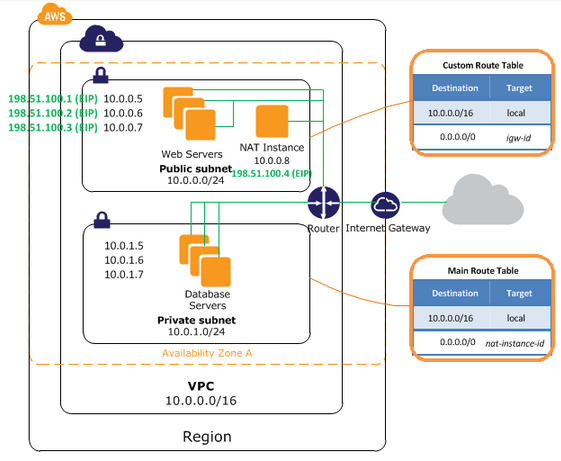
- #AWS BASTION HOST PRIVATE SUBNET HOW TO#
- #AWS BASTION HOST PRIVATE SUBNET INSTALL#
- #AWS BASTION HOST PRIVATE SUBNET UPDATE#
Disable all unneeded services on that bastion host, and keep it constantly patched.
#AWS BASTION HOST PRIVATE SUBNET UPDATE#
4) update the security groups of each of your instances. 3) give that bastion host a public IP either at launch or by assigning an Elastic IP. To connect from your computer to the instance in the private subnet, youll first connect to a bastion host in a public subnet. 1) create a security group for your bastion host that will allow SSH access from your laptop (note this security group for step 4) 2) launch a separate instance (bastion) in a public subnet in your VPC. The following diagram provides an overview of this scenario.
#AWS BASTION HOST PRIVATE SUBNET HOW TO#
My infrastructure includes: Bastion Host on a public subnet 2 EC2 instances on 2 private subnets NAT Gate for outgoing connections Application Load Balancer My question is how to run the Ansible playbook from localhost to affect the private instances. This tutorial demonstrates how to send a request from an EC2 instance in a private subnet to Amazon CloudWatch using AWS PrivateLink.
#AWS BASTION HOST PRIVATE SUBNET INSTALL#
Install and configure RD Gateway on that instance.


You can repeat the -R :: part as many times as you need, so if you have several EC2 instances you can create a single SSH session mapping different local ports to each server RDP port. The basic steps for configuring RD Gateway are: Create a Windows EC2 instance and configure a security group rule to allow RDP access.

You can connect using a RDP client like Remote Desktop to 127.0.0.1 on 3399 port and the connection will be tunneled inside the encrypted SSH session. Putty.exe -ssh -R 3399::3389 after typing your password and getting the shell on the linux bastion host, the RDP server on port 3389 of your remote windows EC2 instance will be available at the desktop PC on port 3399. If you access the windows instance over RDP, on your local desktop, connect to the bastion with: said on the comment above, you are looking for Port forwarding, not agent forwarding.Īssuming your bastion hosts and the Windows EC2 instances are on the same AWS VPC and can reach each other, and also that you already can access the bastion host via SSH from your local desktop:


 0 kommentar(er)
0 kommentar(er)
